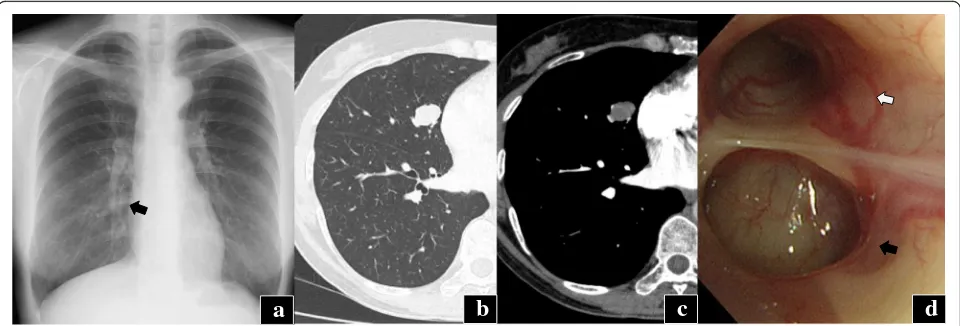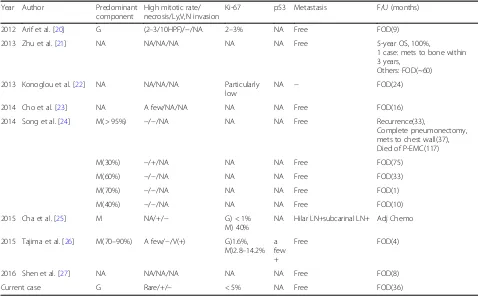Epithelial-myoepithelial carcinoma of the lung: a case report
Full text
Figure




Related documents
These elegant results, expressing the infinite series in closed form, can be generated form ( 1 O) for any positive integer value of R. This will be investigated in the
Bone Mineral Density, Lean Body Mass and Bone Biomarkers Following Physical Exercise in Children with Acute Lymphoblastic Leukemia Undergoing Chemotherapy.. IJBC 2018;
West Side Road, running north from the Conway Village traffic lights to River Road in North Conway, is not only a scenic road that passes two covered bridges, working farms,
Proportion of existing affordable housing units, which is assumed as one possible factor for affecting neighborhood economic diversity level, has no statistically
While specific beliefs about the necessity of medicines were positively associated with medication adherence both in patients with asthma and with COPD, general beliefs about harm
We performed gene expression profiling using FLS from controls and patients with differing disease courses, specifically persistent oligoarticular, extended- to-be and
independent and associated with an induction of intestinal cholesterol biosynthesis as well as with a doubling of neutral fecal sterol loss. This shows induction of adaptive changes
In silico prediction of the remaining ten deep intronic variants and the five rare proximal intronic variants with respect to their likely impact on splice site selection suggested

